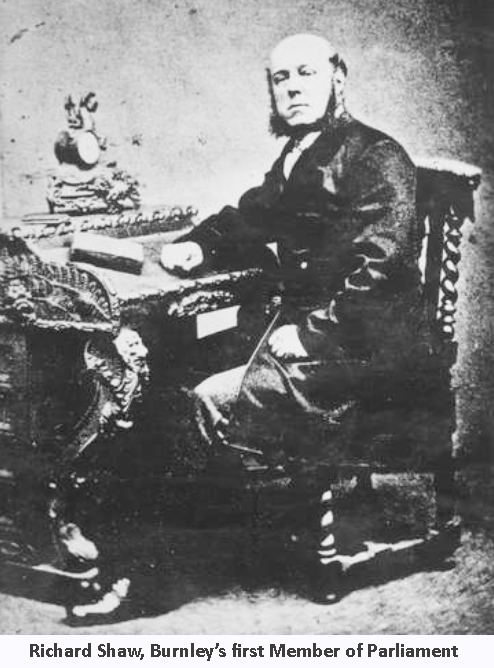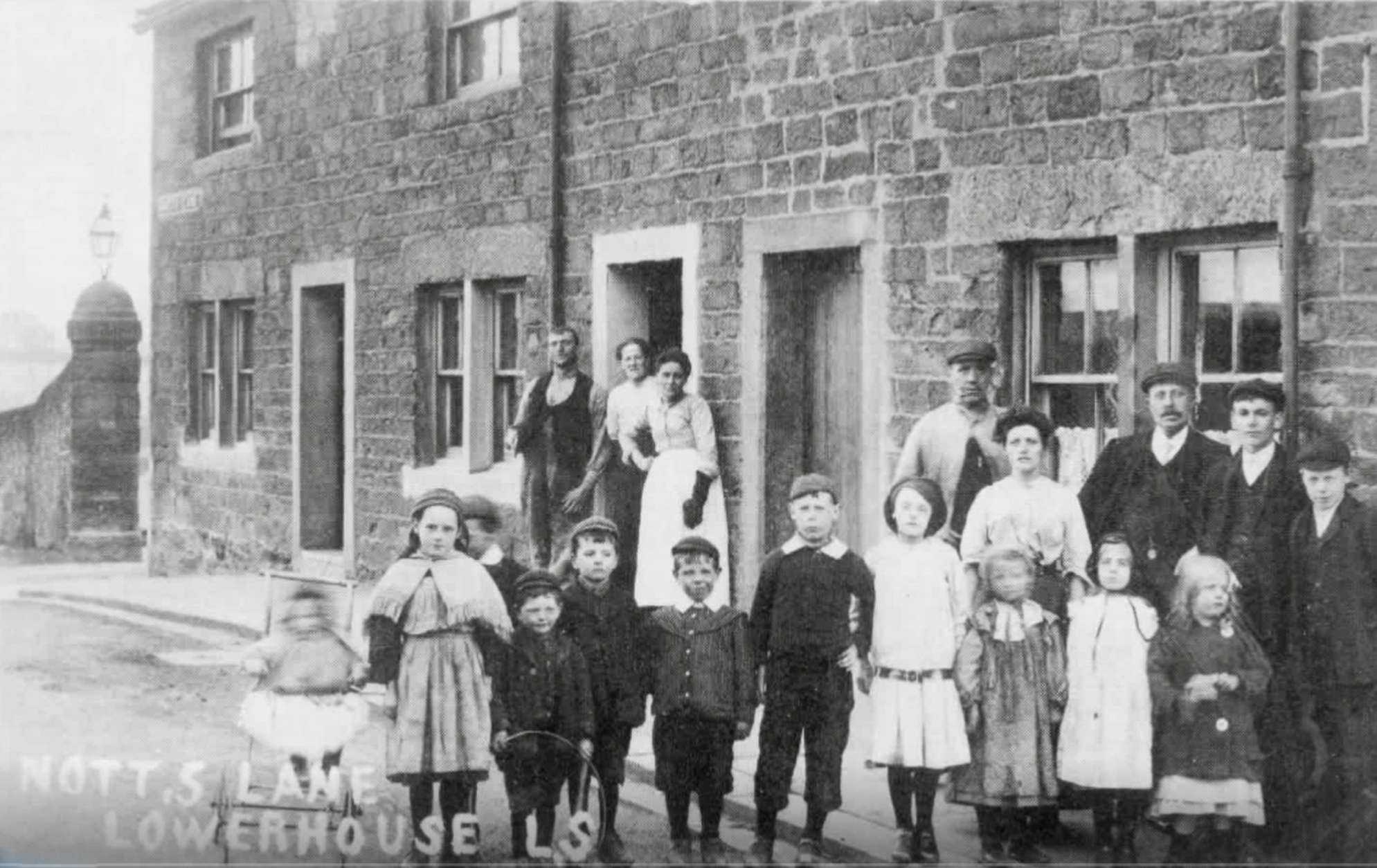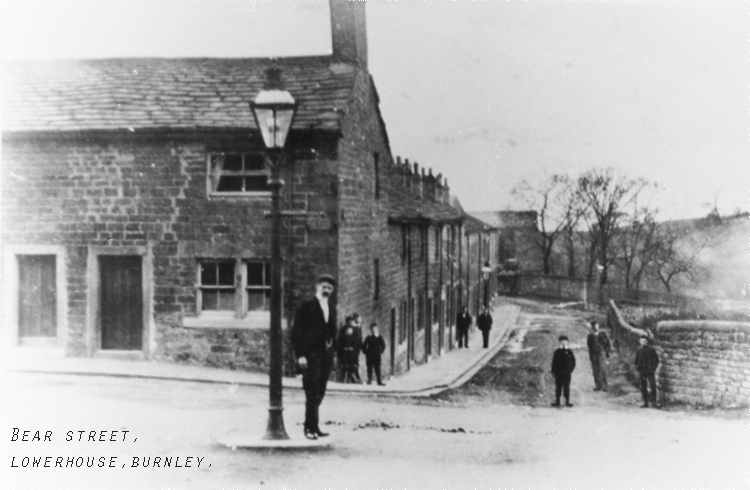 Lowerhouse Mile - Townscape
Lowerhouse Mile - Townscape 
(Page 4 of 4)
Lowerhouse - Industrial Townscape
Lowerhouse Mill was built as a set of two water-powered cotton mills in 1795 on behalf of Peel and Yates, who sold them to Nathanial Dugdale of Oakenshaw,
Clayton-le-Moor in 1813. With his three sons as partners Dugdale began calico printing in 1819 and a new five-storey spinning mill was built in 1836.
The Dugdales were listed as calico printers in 1822 and again in 1834 as John Dugdale and Brothers.
The printworks was taken on by John Dugdale & Brothers for manufacturing in 1812, who continued progressing and improving until 1819, when they commenced printing and expanded into a large works. In 1846, the occupying firm was John Dugdale, Brother & Son, with eight machines, 104 short tables, 15 long tables, 70 block printers, five steam engines and a large waterwheel.
Richard Shaw (below) who was educated at Burnley Grammar School and St. Peter's School,York, married Maria the daughter of James Dugdale of Ivy Bank, Lowerhouse in 1850,
and they lived in Holme Lodge Rossendale Rd, a home he had built in 1852.
He then became a partner of the Dugdales in 1856, and played a major part in running the
company during its greatest period of prosperity. In 1868 when Burnley had been enfranchised as a Parliamentary Borough, Richard was asked to stand as the Liberal
candidate against the Conservative candidate, Gen. Scarlett, and was duly elected by a majority of 382, he was also re-elected in 1874 in a by-election, but died
in office after an unsuccessful operation for throat cancer.

The Mannex Trade Directory (1865) also mentions the Dugdales. The same family developed a neighbouring community with over 180 houses and about 1,100 inhabitants in 1851, along with a gas works, a shop, a co-op store (1872), a sunday school, a new day school (1876) and a Wesleyan Chapel. In 1891, John Dugdale & Brothers were accredited with operating 74,576 spindles and 1,531 looms, producing printers and shirting's at Lower House.
The buildings were taken over by the Drew family from Scotland in the 1860s, and they then expanded and developed the site. There were three brothers one of whom, Daniel, lived on the site, and the works remained under the Drew’s until the 1960s. Some parts of the works still survive as do some of the cottages and larger houses.
Knotts Lane
Situated on the western edge of Lowerhouse, Knotts Lane cottages had a reservoir behind them, which was previously more extensive than today, and used for powering the mills.
The reservoir lost much of its original importance as both mills, Lowerhouse Mill, and the Printworks, (the entrance gate of which can be seen on the left edge of the photo below),
have since been redeveloped for housing. Along with the cottages below, other associated workers’ housing has also survived on Bear Street, which is just to the right of the cottages in the photo below.

Bear Street
The cottages on Bear street were built in the 1820s, the 1830s, and the mid-nineteenth century (Ashmore 1982, 193;), the street comprises of cottages built for mill
workers. The longest row is actually ajoined with the cottages on Knotts Lane, along an unmade road,( See photo below), which is accessed to the rear by an unmade service road. The cottages
are stone-built and of two storeys. One row comprises of four cottages that are of two storeys but are shorter than the others. These houses also have particularly small windows, and are set below
the present road level.

Most of the mill complex has been demolished, although a two-storey, 14 bay preparation block, with internal engine house, two mill ponds and a boundary wall still survive today. The print and dye works are shown on the Ordnance Survey first edition 1:10,560 map. The map shows a large mill complex, the western half is occupied by the printing works, consisting of a number of buildings, storage tanks and reservoirs, and adjacent cottages.



